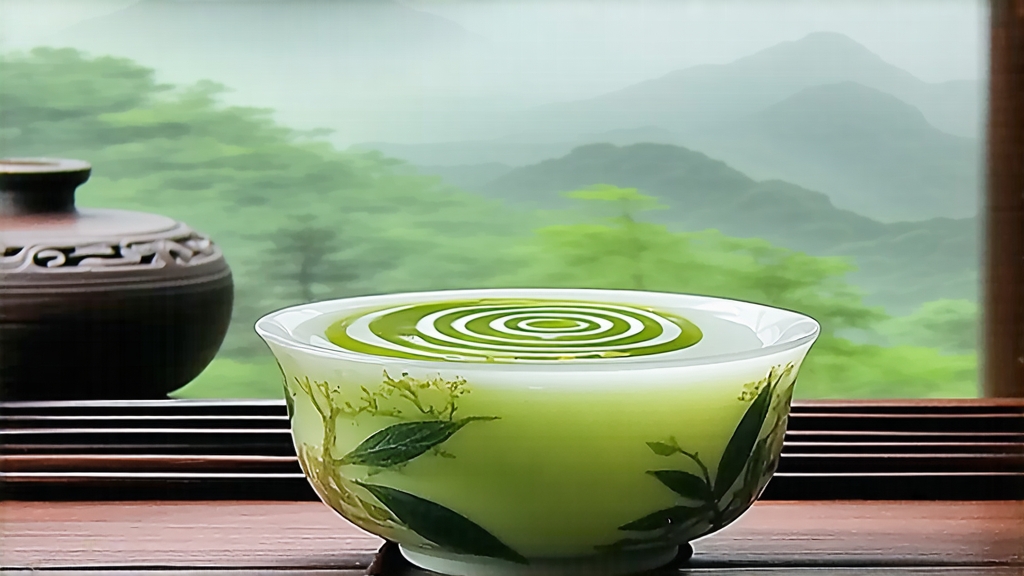
Among the jade-colored constellation of Chinese green teas, few leaves are as diminutive yet as dazzling as Biluochun. Literally “Green Snail of Spring,” its name alone evokes the season’s first curl of vitality, a tiny spiral that unfurls in hot water to release a perfume so fragrant that poets once accused it of “brewing the soul of a flowering mountain.” Originating from the mist-laden islands of Dongting shan in Taihu Lake, Jiangsu, Biluochun is both a tea and a love letter between fruit trees and tea bushes, a cup that tastes of apricot blossoms and lake fog. For the international drinker accustomed to the grassy snap of Japanese sencha or the nutty breadth of Longjing, Biluochun offers a softer, almost flirtatious complexity—an invitation to rethink what “green” can mean.
Historical roots
The first reliably dated mention appears in 1699, when the Kangxi Emperor visited Lake Taihu and was presented with a local tea so aromatic that he is said to have asked, “What is this terrifying fragrance?” The name “Scary Fragrance” (Xia Sha Ren Xiang) stuck until the emperor, charmed yet diplomatic, rechristened it Biluochun for its spiral shape and spring harvest. Folklore pushes the story further back: a tea-picking girl hid the leaves in her bosom during a sudden storm; the warmth of her body lightly oxidized them, releasing an unexpected floral bouquet. Whatever the truth, the tea had already entered the Qing court tribute list by the early eighteenth century, shipped north in small bamboo-lined chests cushioned with pomelo peel to preserve its delicacy.
Micro-terroirs: two mountains, one lake
Authentic Biluochun comes only from Dongting Dongshan (East Mountain) and Dongting Xishan (West Mountain), two limestone islands rising from Taihu, China’s third-largest freshwater lake. The water body moderates temperature, creating a humid cloak of mist that filters sunlight into a soft, diffused glow. On the slopes, tea bushes are interplanted with fruiting trees—peach, plum, apricot, loquat—whose roots share the same acidic, well-drained soil. When spring arrives, blossoms and tea buds open in synchrony, allowing the leaf to absorb airborne volatiles; this botanical neighborhood is credited for Biluochun’s signature fruity nose. Outside this micro-zone, similar-looking spirals are produced in Sichuan, Guizhou and Zhejiang, but connoisseurs label them “outside mountain” teas; they may be pleasant, yet lack the yun—a Chinese term roughly translating to lingering rhythmic finish—of the lake islands.
Cultivar fingerprint
The primary cultivar is a small-leaf Camellia sinensis var. sinensis locally called “Dongting Qunti.” Being a seed-propagated population rather than a cloned line, it displays slight genetic drift from field to field, adding subtle variations to cup profiles. Buds are extraordinarily tiny—barely 1.5 cm when picked—yet packed with catechins and fragrant amino acids. The high ratio of bud to leaf is critical; one kilogram of finished tea requires roughly sixty to eighty thousand shoots, all plucked before the Qingming festival in early April.
Plucking choreography
Pickers work to a strict “three early, three tender” rule: early morning, early season, early bud; tender bud, tender leaf, tender hand. The ideal pick consists of one barely unfurled bud flanked by an equally miniature leaf—the so-called “sparrow’s tongue.” Baskets are shallow and wide to prevent compression; every hour the leaves are transferred to airy bamboo trays shaded by cheesecloth. Speed is paramount: the fragrance that beguiled an emperor is ephemeral, and oxidation waits for no one.
Crafting the spiral: a six-step ballet
- Withering: trays rest in drafty verandas for two to four hours, reducing moisture by roughly 10 % and softening cell walls.
- Pan-firing (shaqing): leaves are tumbled by hand in woks heated to 180 °C for three minutes. The goal is “kill-green” enzyme deactivation while preserving chlorophyll’s jade hue. Masters listen for the crackle that signals evaporation of grassy aldehydes.
- Rolling (cuotuan): temperature drops to 70 °C; fingers coax the bud into a tight spiral against the wok’s wall,